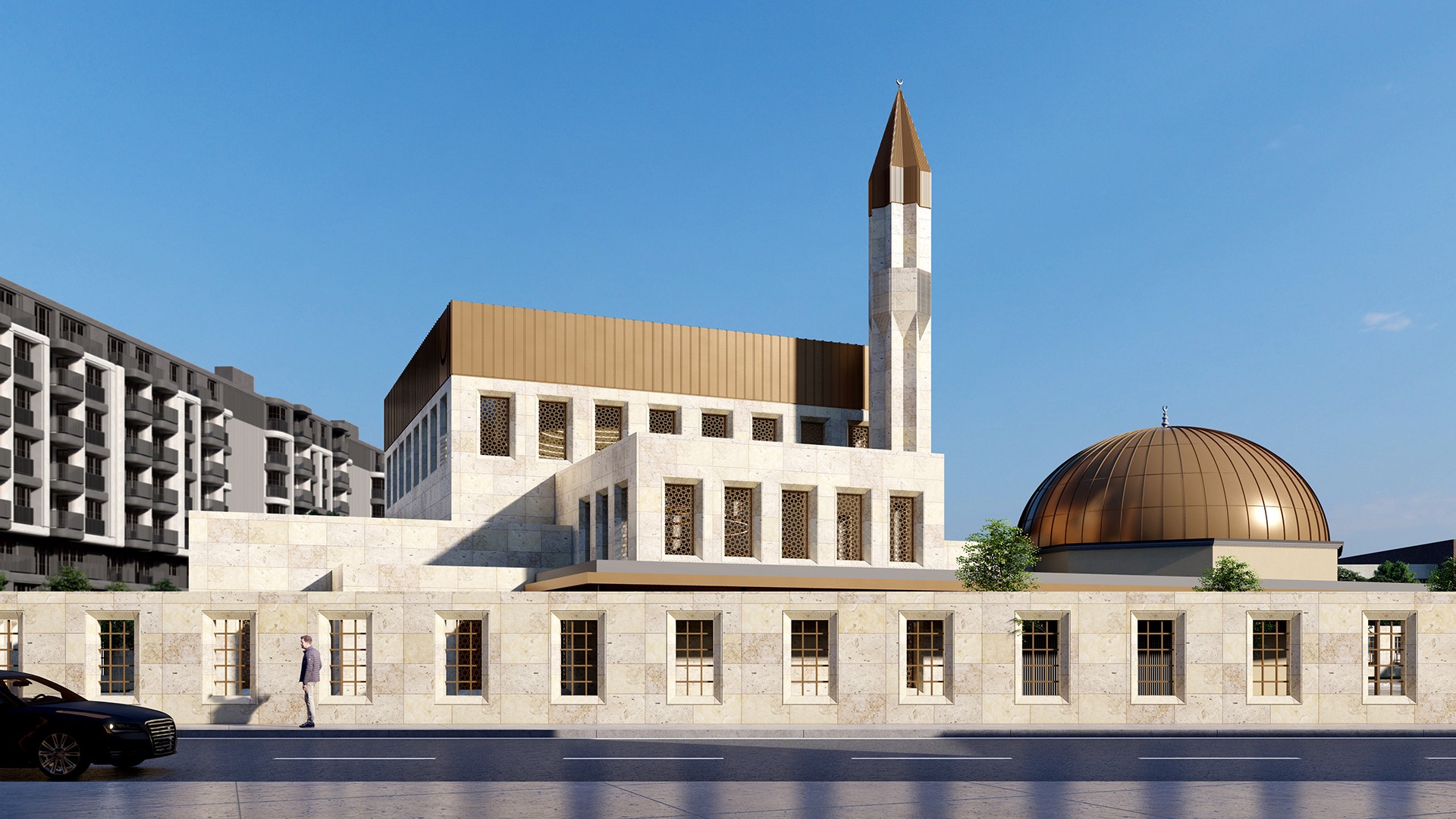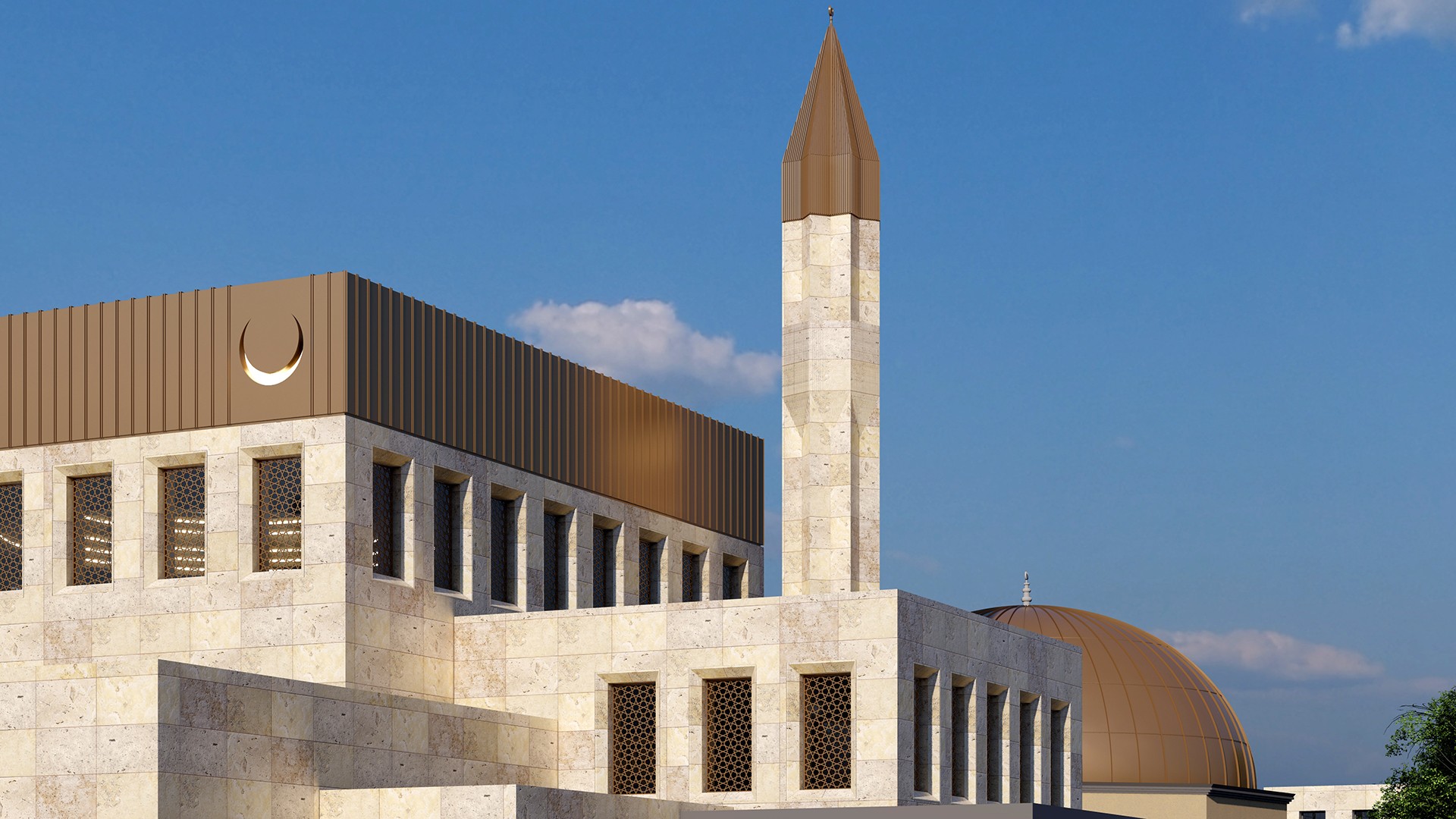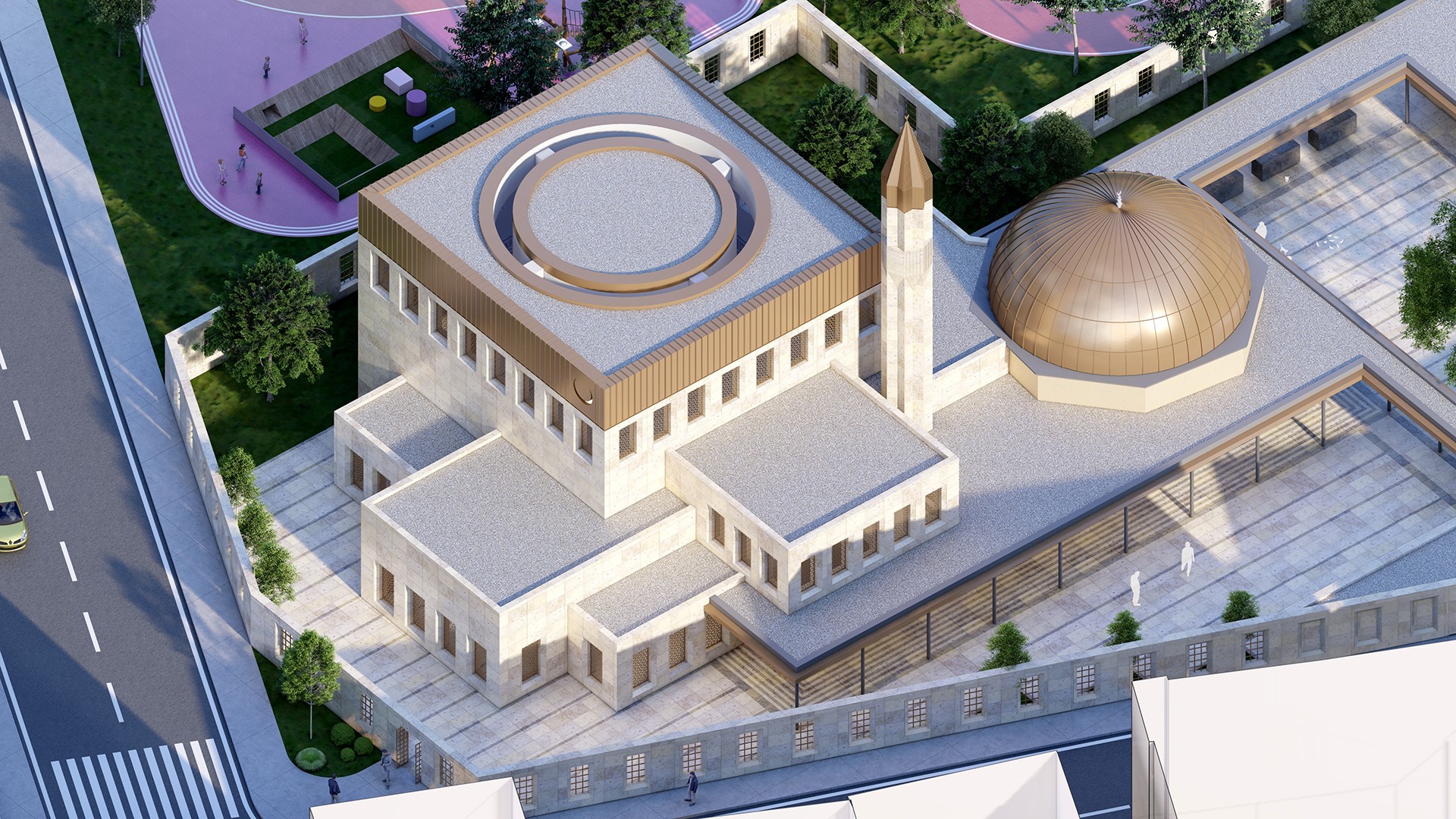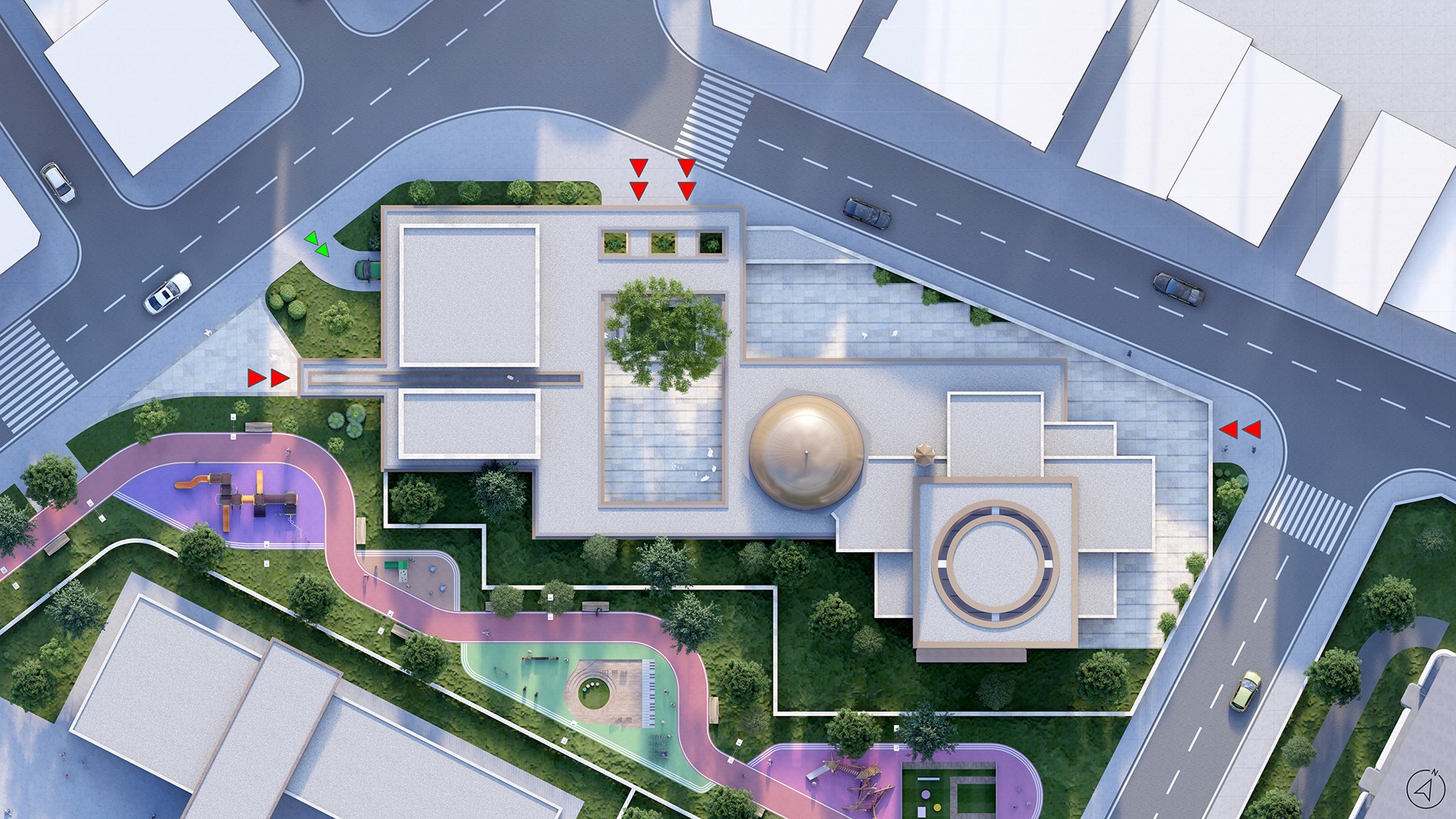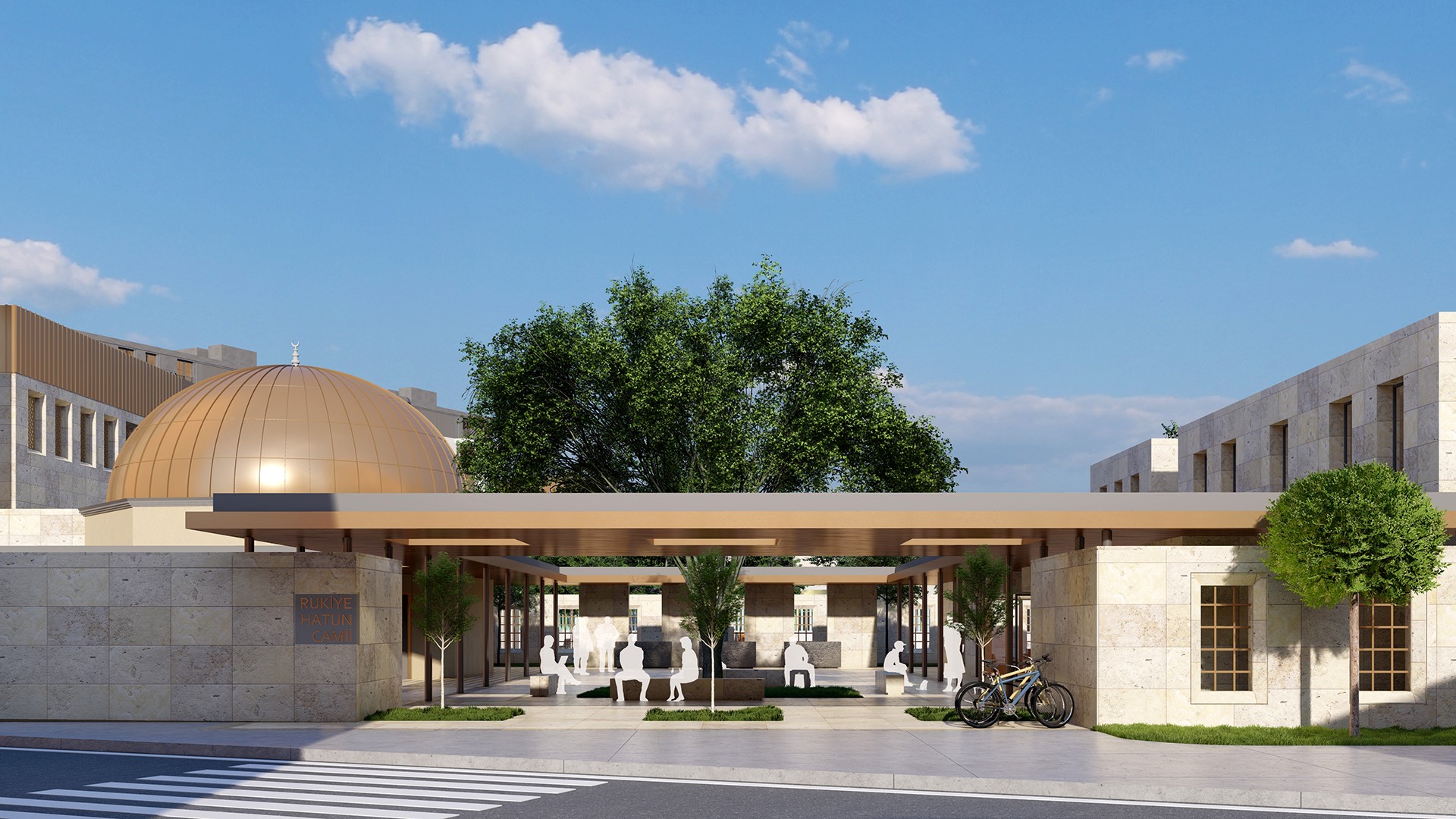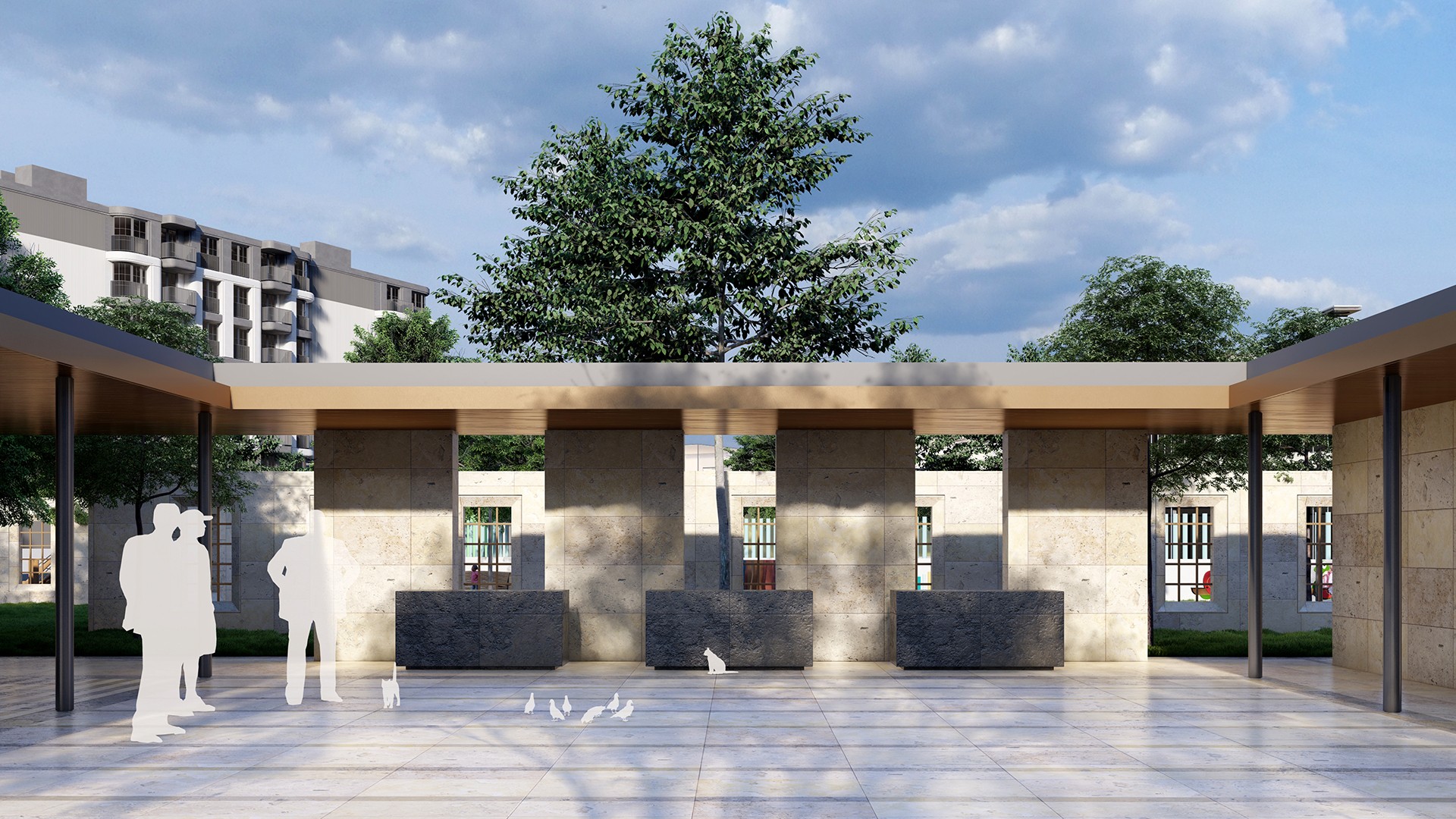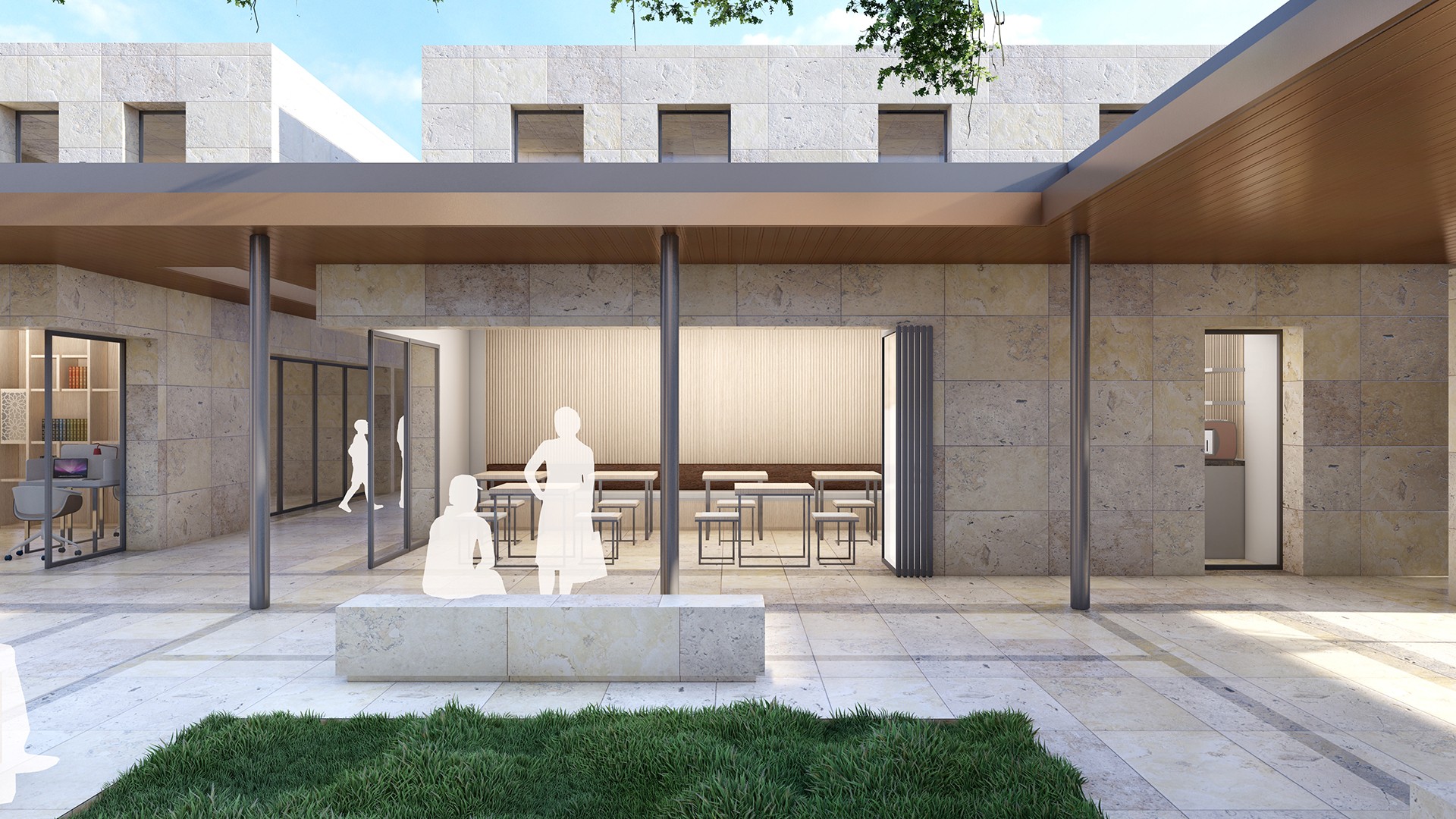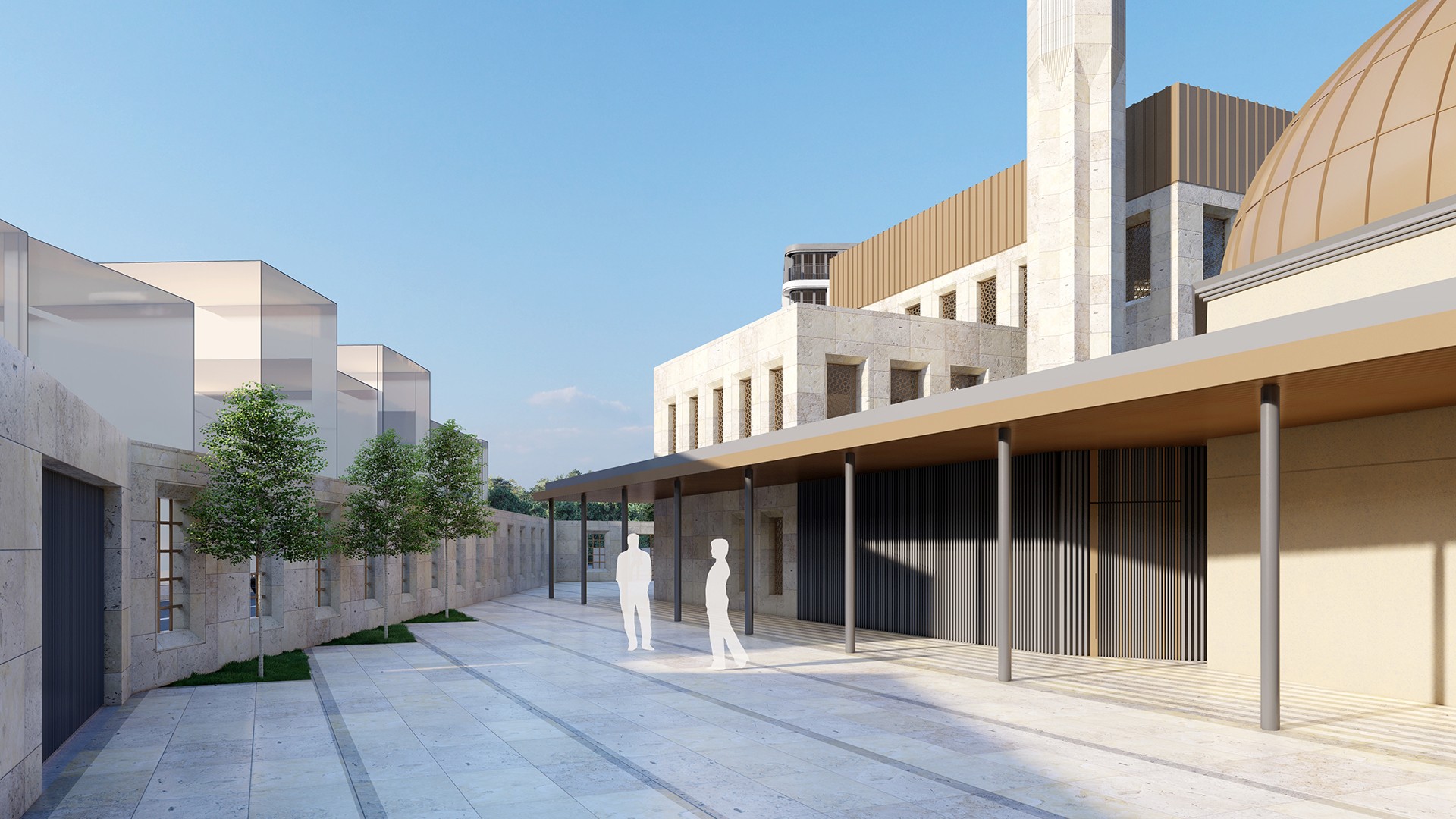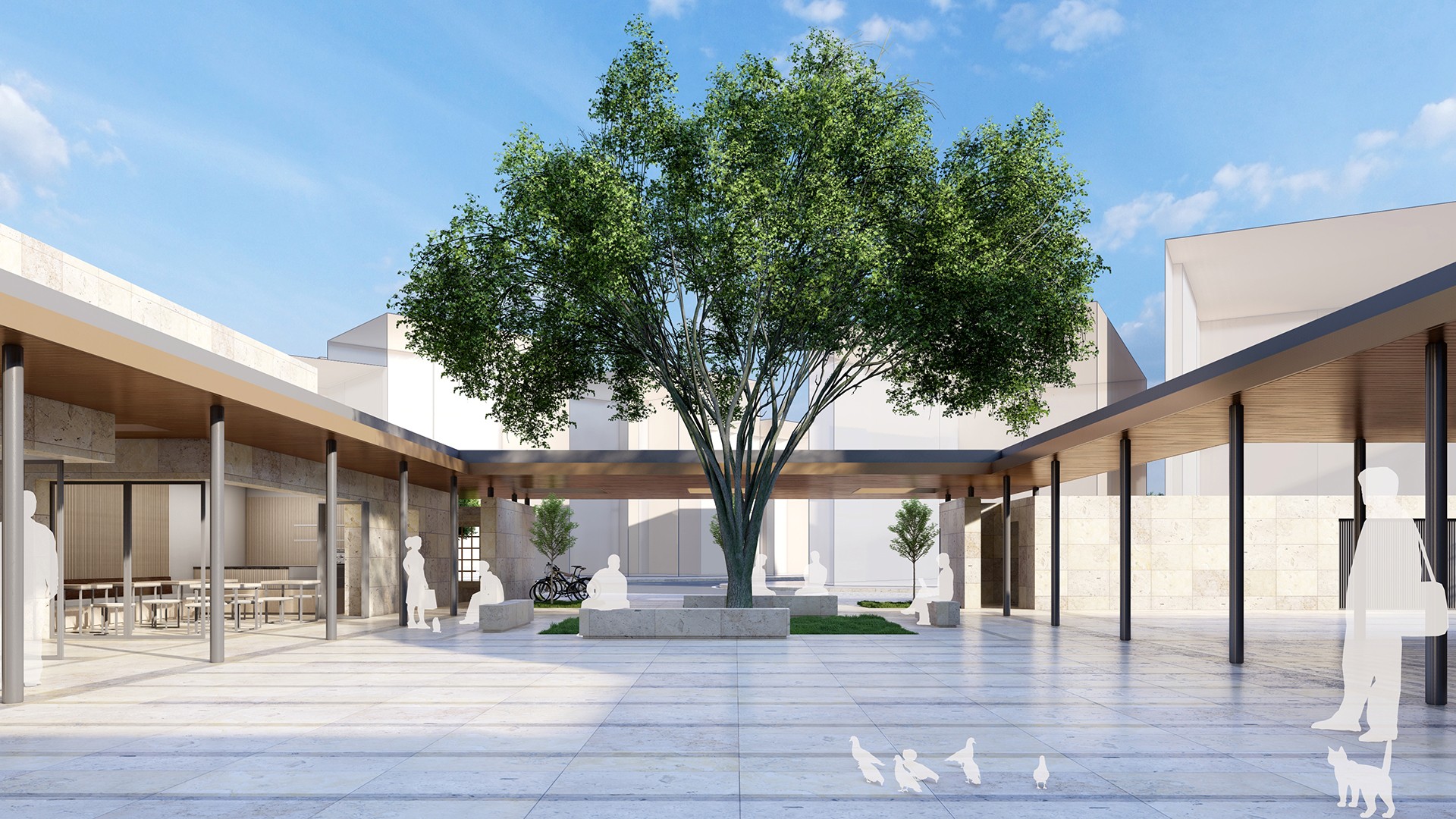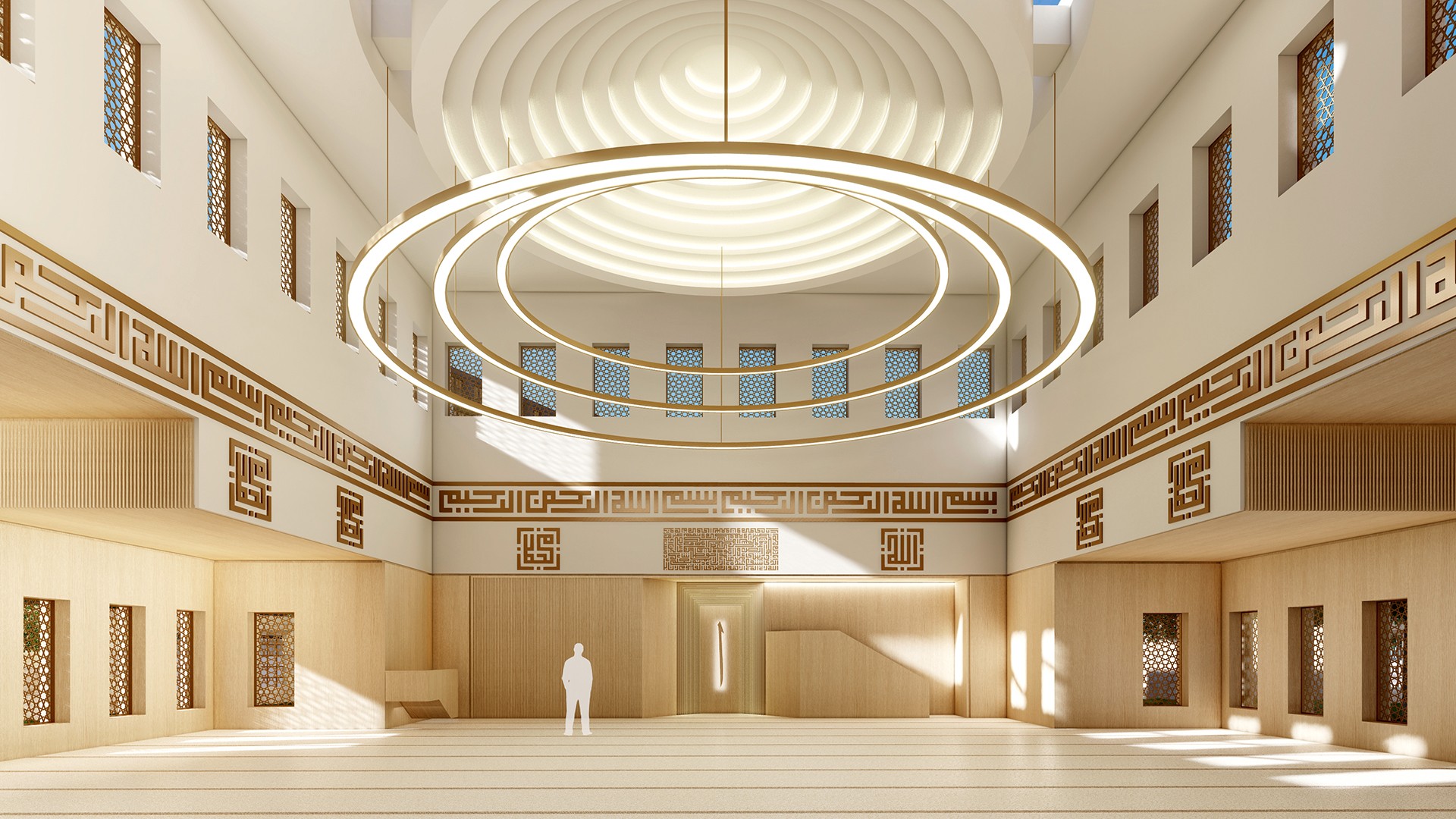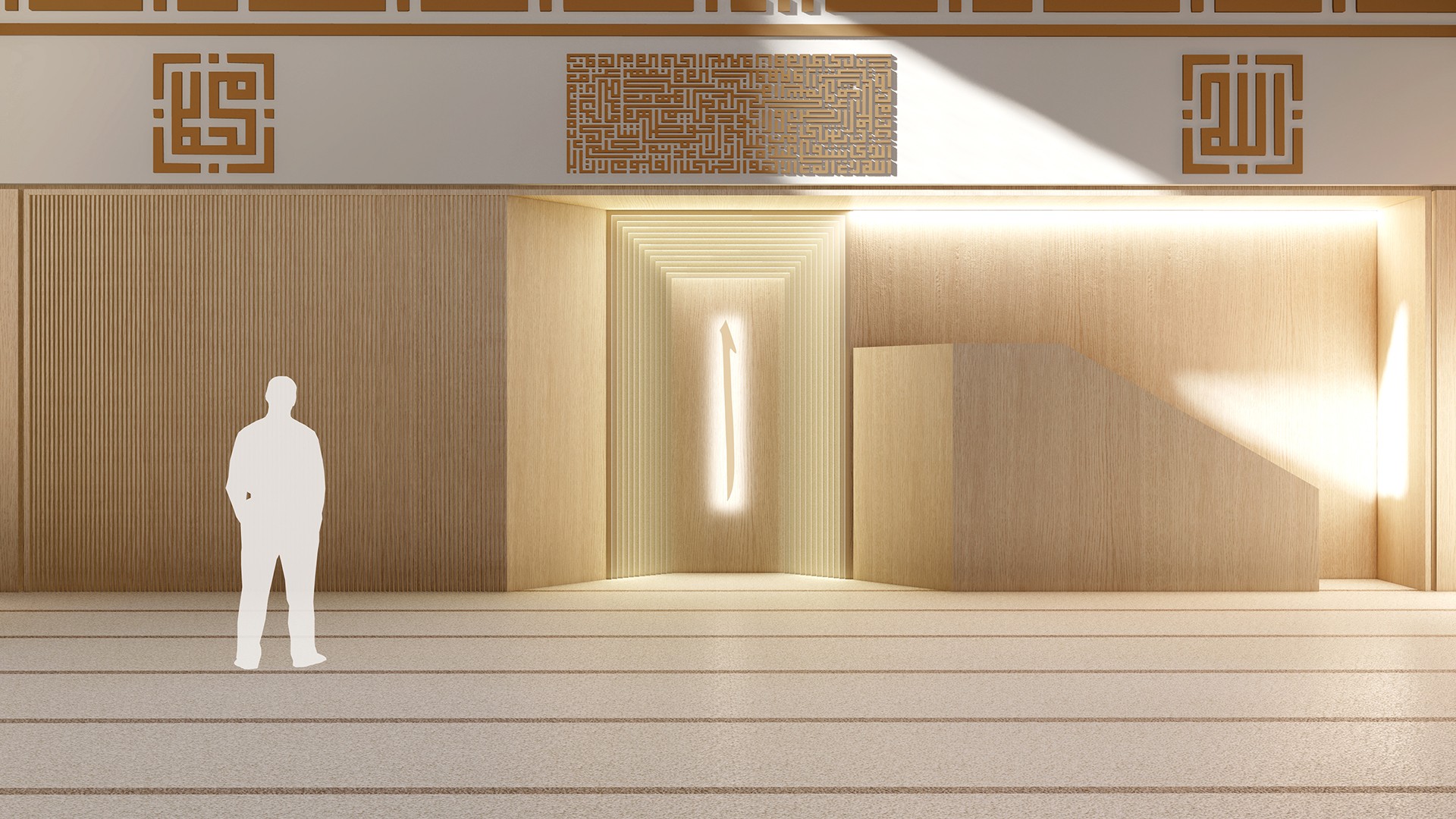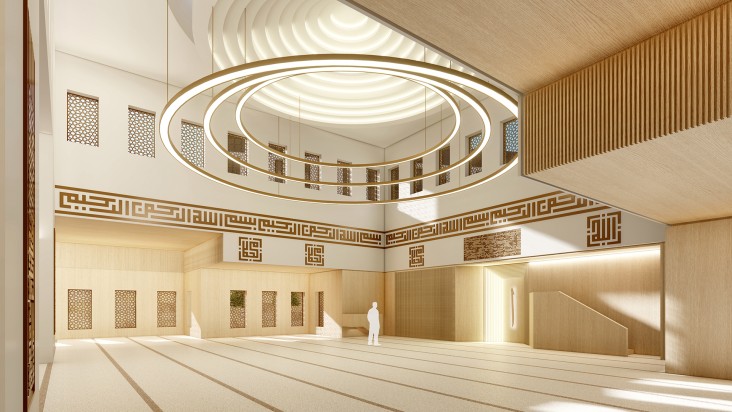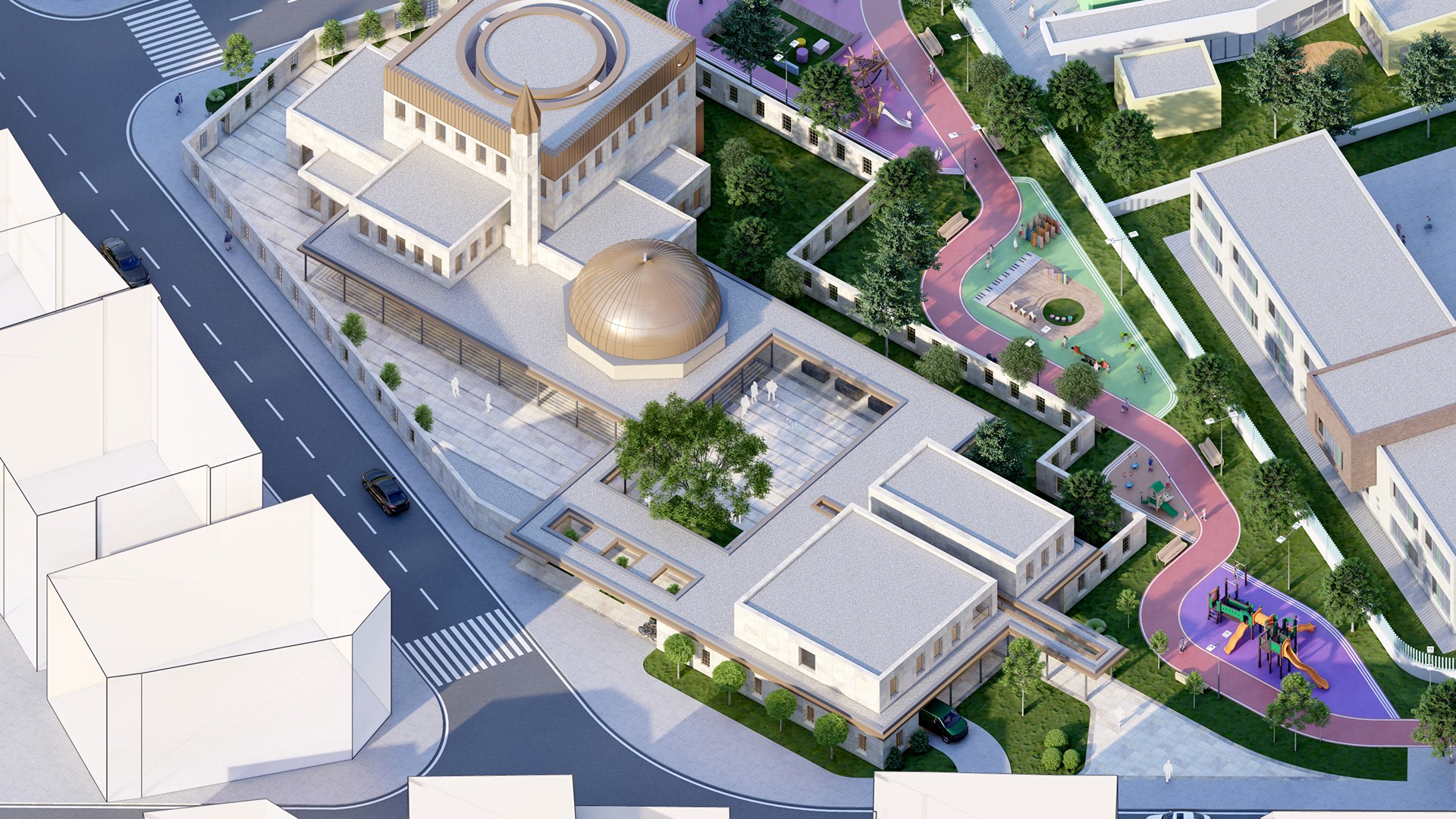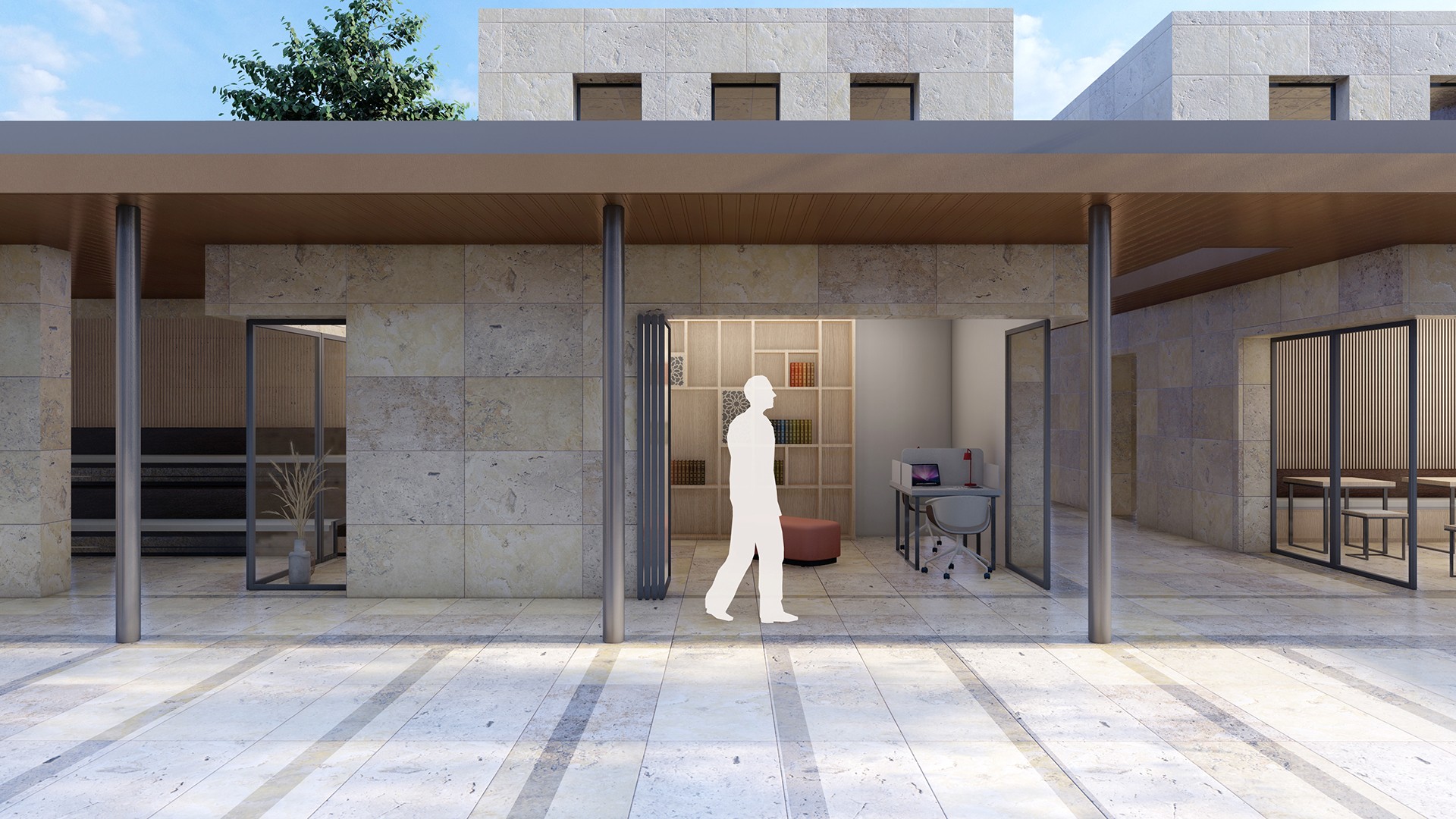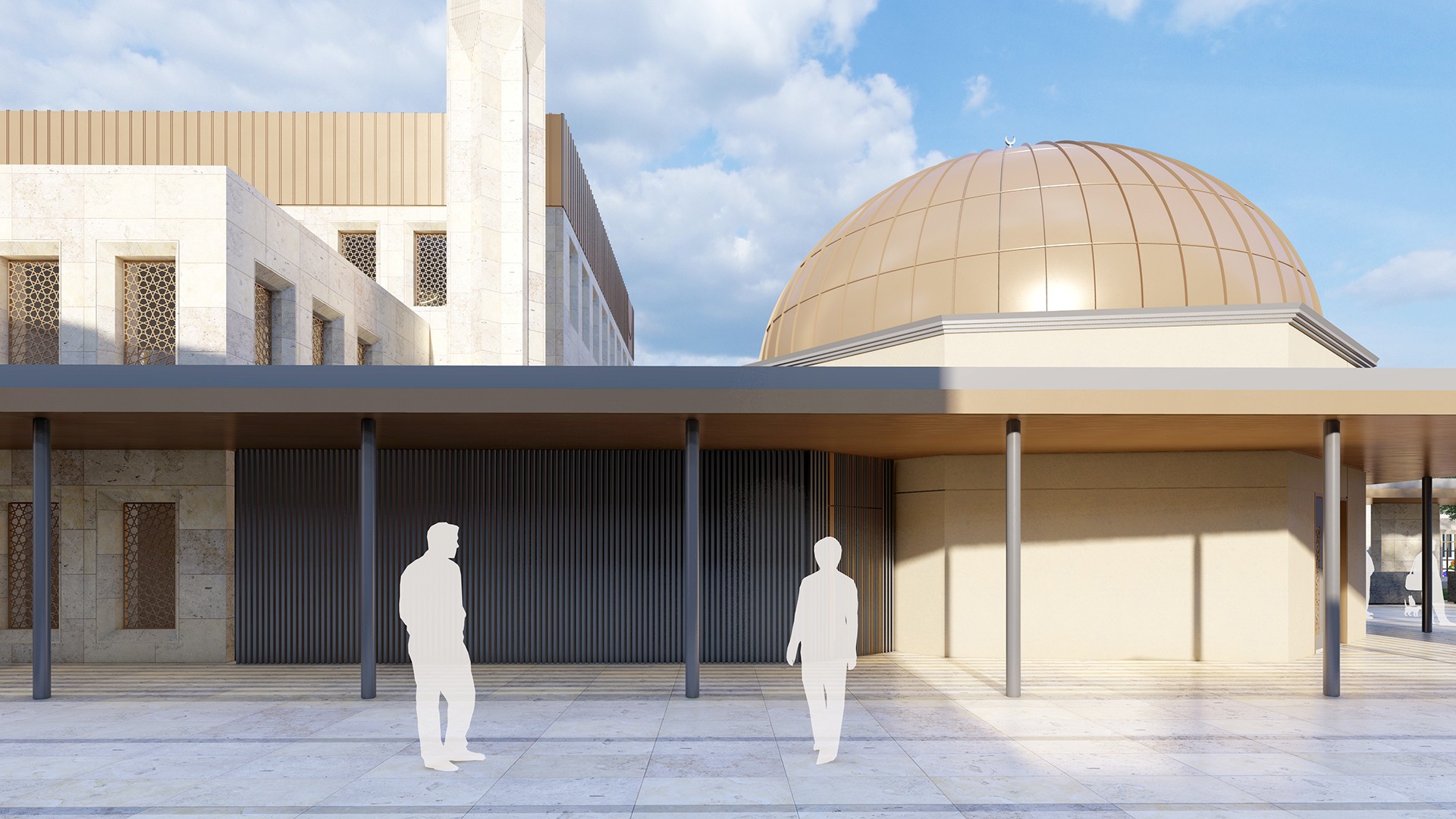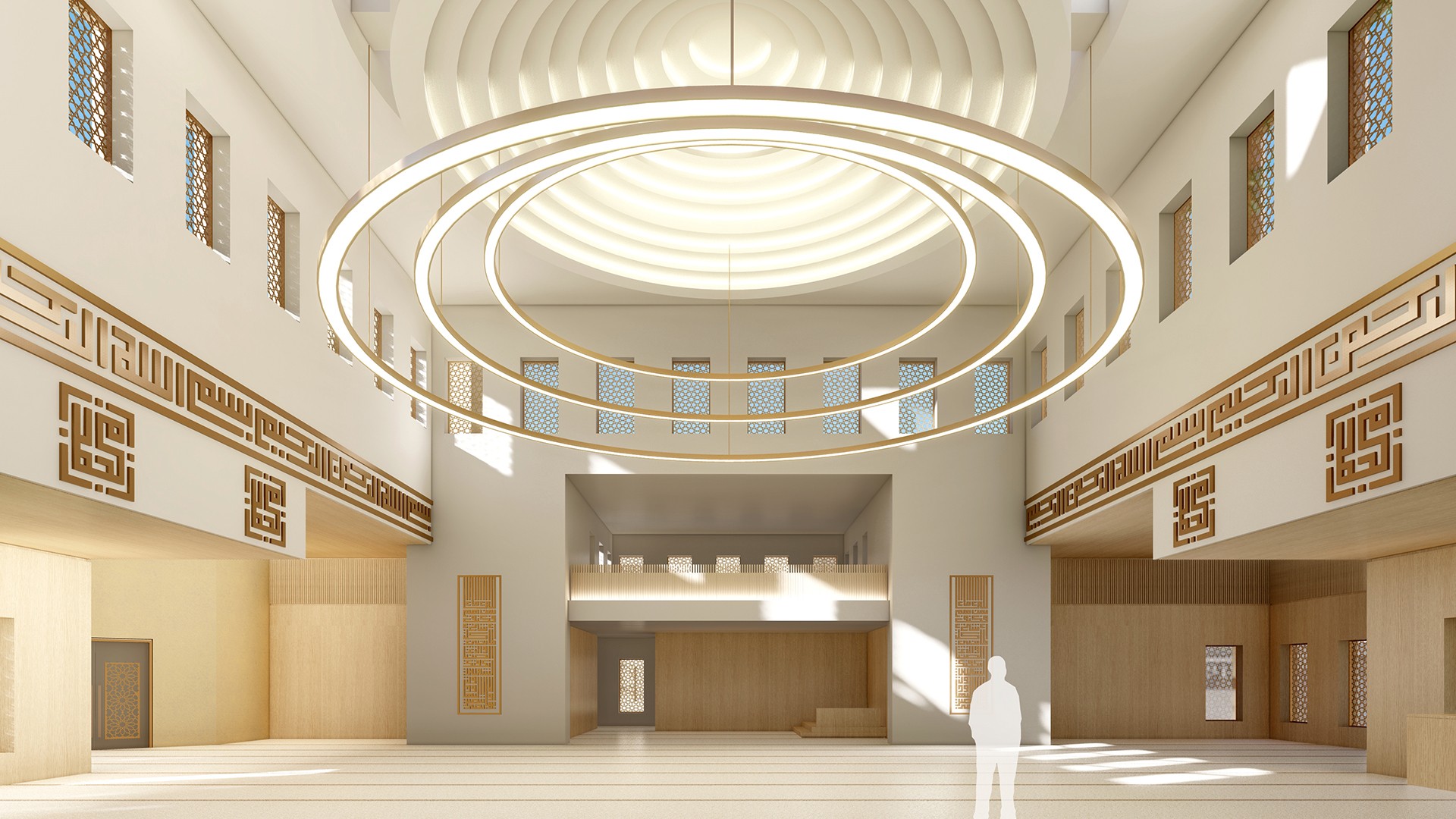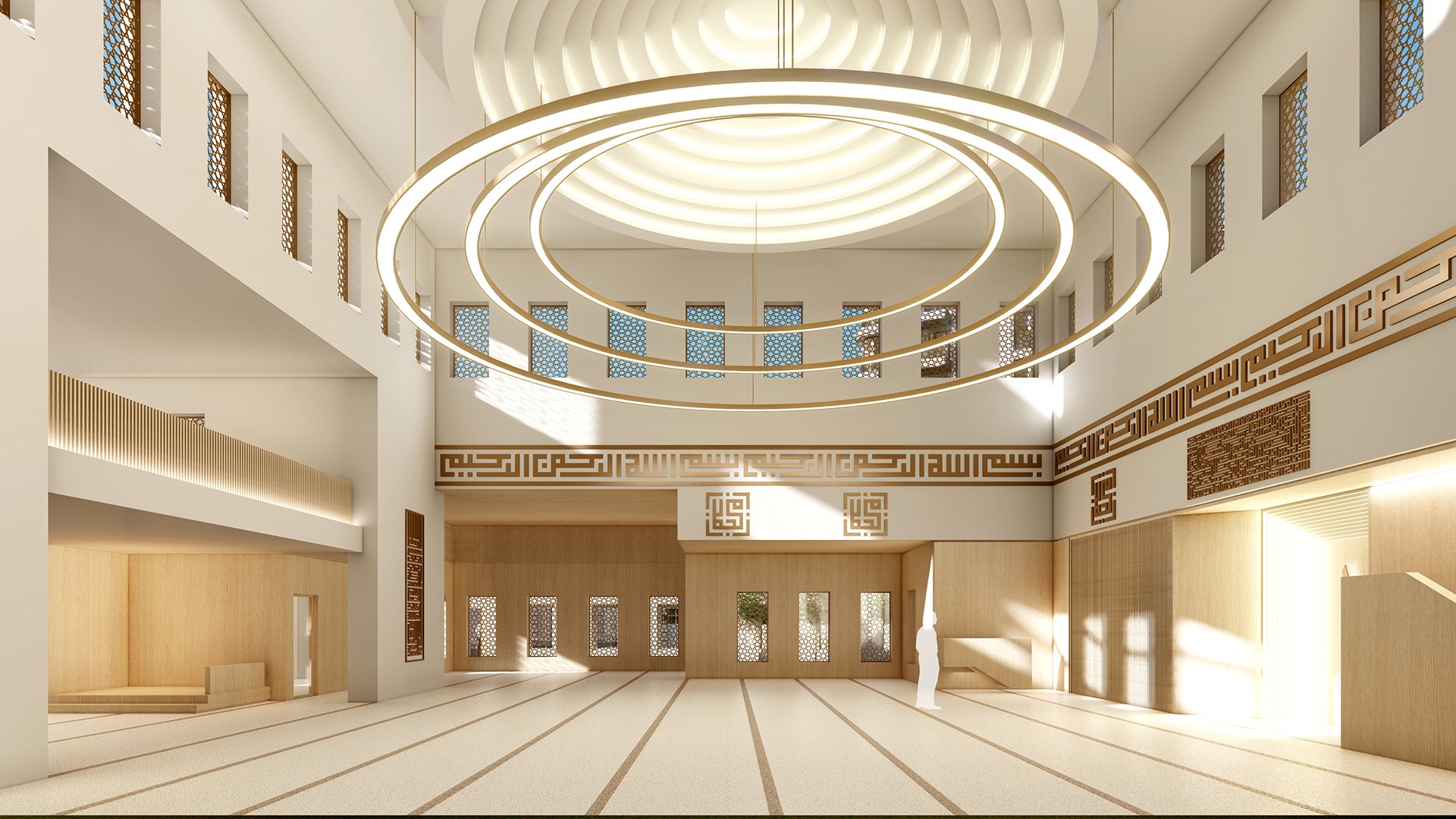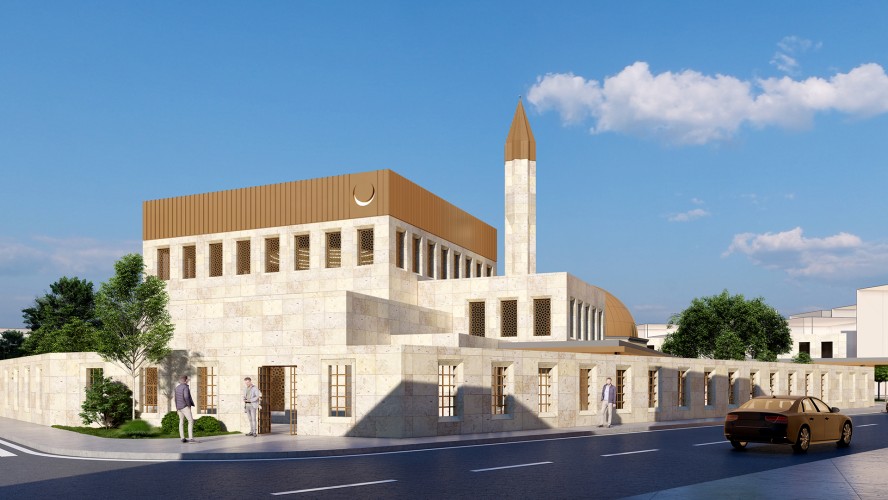
The interior of the structure was designed as a direct reflection of the mass movement on the exterior. In a space where the focus is on worship, every kind of excess that could disrupt concentration was avoided. Wall surfaces at a human scale were covered with a warm material, wood. At the center of the domed structure used as the entrance, a
pool similar to the one in the Bursa Grand Mosque was positioned. Kufic script was used to place calligraphic inscriptions in alignment with the mass movement on the exterior. At the top of the large volume, a central circular lighting element was installed as a reference to motion. The projection of this lighting on the ceiling, gradually ascending upwards, strengthened the image of congregation at the center of the main structure. The pulpit, which traditionally stands perpendicular to the mihrab wall in traditional mosque planning, was aligned p
rallel to the wall to maintain the pure order. Rukiye Hatun Mosque, along with the influences it takes from the traditional mosque concept, is situated in the midst of a dense urban environment as a place where one can breathe, a simple and unadorned social and living complex. When approaching the project, we aimed to reinterpret the traditional mosque typology with a modern perspective while preserving its essence. Our goal was to create a comprehensive mosque and complex structure, including classrooms, a library, ablution areas, and an imam's residence. While it might seem more practical to solve the additional space solutions vertically, give
n that the existing mosque is located right in the middle of the plot, we aimed to preserve the concept of a single and large space in consideration of the origin of the word "cem" (congregation) in Turkish, emphasizing unity and congregation. To preserve the spiritual value of the existing mosque, we positioned it as an entrance structure, and the complex was designed around it. In forming the mass of the complex, taking advantage of the octagonal mosque structure, we created fragmented structures that did not disconnect from the human scale and did not suppress the existing mass. We aimed for a minimalist architectural approach by trying to finish both the
main building structure and the lower attached structures with a single material. This approach also aimed to create an open space within the dense urban context. Taking inspiration from the Ottoman concept of squares that function as centers of social life, we designed a courtyard that could be used by not only the mosque congregation but also the local residents. We aimed for this courtyard to be a living space that people could use for various purposes at any time. Since the plot has three open sides, we created openings on three sides to invite people from all directions.
The complex, consisting of four classrooms, a tea house, a library, ablution areas, and an imam's residence, was treated as a living space. With the goal of keeping the interior of the structure as simple as possible with minimal materials, we covered all walls with warm wood. To continue the early Ottoman mosque architectural tradition, we placed a pool at the entrance. Seeking to interpret the traditional mosque perception of a dome and minaret in plan, we continued the mass movement seen outside inside as well. Taking cues from the mass movement, we placed calligraphic inscriptions using the Kufic script in alignment with these lines. At the top of the large volume, we placed a central circular lighting feature as a reference to motion and life in Islamic culture. By g
radating this lighting, we aimed to create the sense of gathering and "turning towards the center," symbolized by the dome. We maintained the pure order by aligning the minbar, which traditionally stands perpendicular to the mihrab wall, parallel to the wall in the general mosque perception. Rukiye Hatun Mosque, built in 1983 in Sefaköy, Istanbul, is a neighborhood-scale mosque with an octagonal plan. Due to its spiritual significance for the family who built the mosque, the decision was made to pre
serve the existing 118-square-meter structure, which consists of a single dome. The project came to us with the request to enlarge the worship area to meet modern needs and transform it into a complex with new functions. Our main approach was to focus on the essence of the traditional mosque concept, reinterpret this essence with contemporary construction techniques, and create a complex that can be actively used by the local community outside of prayer times, including functions suc
h as classrooms, a library, a tea house, and the imam's residence. Since the existing mosque is located right in the center of the plot, it might seem more practical to solve additional space needs vertically. However, considering the origin of the Turkish word "cem" (congregation), which emphasizes unity and congregation, we aimed to preserve the concept of a single and large space. To preserve the spiritual value of the existing mosque, we positioned it as an entrance structure, and the complex was designed around it. In forming the mass of the complex, taking advantage of the octagonal mosque structure, we created fragm
ented structures that did not disconnect from the human scale and did not suppress the existing mass. We aimed for a minimalist architectural approach by trying to finish both the main building structure and the lower attached structures with a single material. This approach also aimed to create an open space within the dense urban context. Taking inspiration fr
om the Ottoman concept of squares that function as centers of social life, we designed a courtyard that could be used by not only the mosque congregation but also the local residents. We aimed for this courtyard to be a living space that people could use for various purposes at any time. Since the plot has three open sides, we created openings on three sides to invite people from all directions. The complex, consisting of four classrooms, a tea house, a library, ablution areas, and an imam's residence, was treated as a living space. With the goal of keeping the interior of the structure as simple as possible with m
inimal materials, we covered all walls with warm wood. To continue the early Ottoman mosque architectural tradition, we placed a pool at the entrance. Seeking to interpret the traditional mosque perception of a dome and minaret in plan, we continued the mass movement seen outside inside as well. Taking cues from the mass movement, we placed calligraphic inscriptions using the Kufic script
in alignment with these lines. At the top of the large volume, we placed a central circular lighting feature as a reference to motion and life in Islamic culture. By gradating this lighting, we aimed to create the sense of gathering and "turning towards the center," symbolized by the dom
e. We maintained the pure order by aligning the minbar, which traditionally stands perpendicular to the mihrab wall, parallel to the wall in the general mosque perception. Rukiye Hatun Mosque, while drawing influences from the traditional mosque concept, is a serene and unadorned living complex in the middle of a dense urban context where people can breathe.

